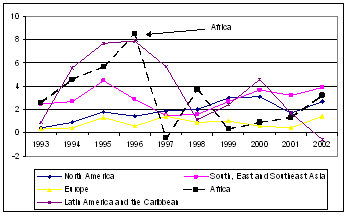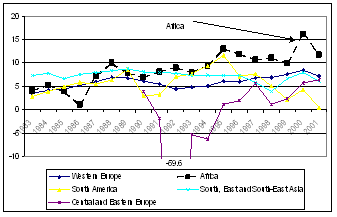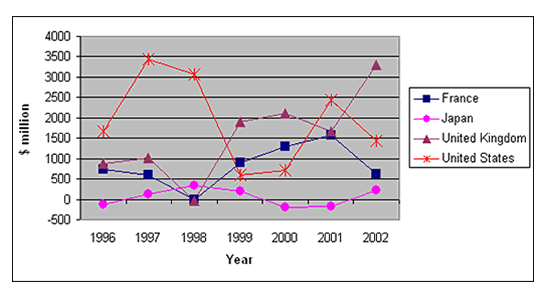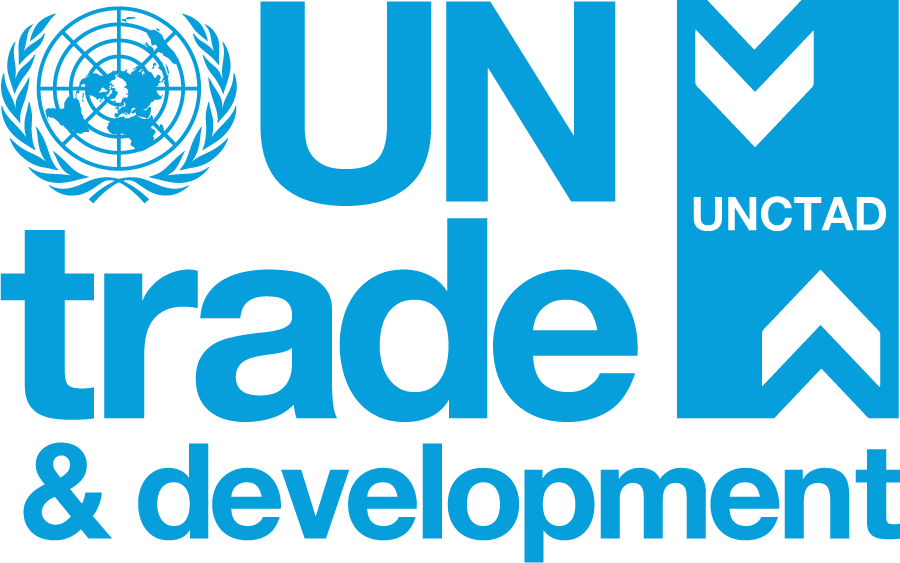UNCTAD and the Japan Bank for International Cooperation (JBIC) have launched a joint African Investment Initiative to encourage greater investment by Japanese companies in Africa with the ultimate aim of encouraging economic growth, it was announced this morning in Geneva.
Under the initiative, three Blue Books on Best Practice in Investment Promotion and Facilitation will be prepared with the three countries of the East African Community: Kenya, Tanzania and Uganda. The Blue Books, drafted in consultation with governments and investors, will propose a set of 6 to 10 measures for overcoming impediments and improving the investment climate which the governments could agree to implement within a 12-month period. The initiative follows Prime Minister Junichiro Koizumi´s Sept. 2003 announcement that his government will promote Japanese private investment in Africa through a number of modalities, including JBIC´s overseas investment loans, with a total target of $300 million over a five-year period.
The objective of this initiative is to encourage poverty reduction through economic growth, which is one of the three pillars of the New Partnership for Africa´s Development (NEPAD). JBIC is sponsoring several such initiatives. The initiative announced today, at a meeting of UNCTAD´s Commission on Investment, Technology and Related Financial Issues, complements the focus on Africa at this year´s G-8 Summit.
At today´s meeting Kweronda Ruhemba, Permanent Representative of Uganda, speaking on behalf of the three countries, said they strongly welcomed the initiative and that President Museveni of Uganda "would be pleased to take the results of the Blue Books project to the G-8 Summit in Scotland in July".
Japanese investment in Africa has been low, accounting for only 0.6% of Japan´s global outward stock. Investment by other Asian countries in the continent is also low, although the percentage shares are higher and the absolute numbers lower. In 2002, for example, the global outward FDI stocks of both China and India were just under $10 billion each, of which 5% in China´s case and 18% in India´s was in Africa. The reasons are the size of the domestic African market, the availability of more competitive investment destinations closer to home and, in the case of Japan, the lack of a support network and weak linkages between FDI and official development assistance (ODA).
The profitability of investment in Africa may be competitive in comparison with other regions (see figure 1), and there is a case for putting more emphasis on Africa as a commercially viable destination for foreign investment. (Profitability is measured, in figure 1 below, as the ratio of current profit to sales in the case of Japanese investment and as the ratio of net income to sales in the case of US investment.)
UNCTAD has done extensive work on investment-related issues in the East African Community. It published an investment policy review (IPR) of Uganda in 2000 and an investment guide to Uganda in 2001, which was updated last year. For Tanzania, an IPR was published in 2002 and a guide will appear by mid-2005. Both an IPR and a guide are being finalized on Kenya and will be published by mid-2005. Other related UNCTAD activities in the region include a good governance project in Tanzania, entrepreneurship and linkage development projects in Uganda and training in investment promotion in Kenya.
UNCTAD and JBIC developed Blue Books for Cambodia and Lao PDR in 2004, the year those countries joined ASEAN. JBIC is an active member of the UNCTAD-ICC Investment Advisory Council, established at the Third UN Conference on the Least Developed Countries (Brussels, 2001).
ANNEX
Tables and figures
Figure 1. Profitability of FDI by region
a. Japanese companies
b. US companies
Source: UNCTAD, based on data from the Ministry of Economy, Trade and Industry in Japan and the Department of Commerce in the United States.
Note: a For Japan, this is the ratio of current profit to sales; for the United States, it is the ratio of net income to sales.
Figure 2. FDI flows to Africa from selected countries:1996-2002
Source: UNCTAD


